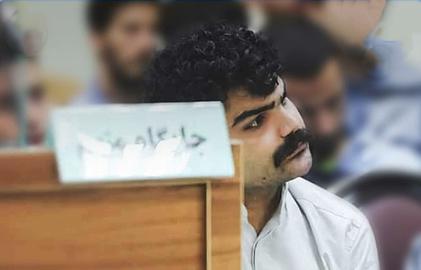Last December, the Iranian judiciary and intelligence agents arrested animal rights activist Ali Tabarzadi in a midnight raid. They interrogated him for two days before releasing him without charge. Tabarzadi, who happens to be the son of imprisoned journalist and human rights activist Heshmatollah Tabarzadi, maintains a Facebook page called “My Protest Movement and 74 lashes” to oppose conservative MPs’ efforts to make dog ownership punishable with torture by flogging.
Tabarzadi had called on Iranians to join a demonstration against the destruction of stray dogs and cats. While Iranian authorities tend to be wary of most public gatherings, they likely also took alarm at Tabazadi’s linking of animal and human rights. “Cruelty to other creatures makes monsters out of humans,” read a statement on his page.
A Cultural Confrontation
In 1942, Iranian writer Sadeq Hedayat imagined the plight of a lost pet in his story The Stray Dog, in which a canine named Pat wanders the village of Varamin looking for food and longing for his lost human family. He finds no kindness, as villagers kick and stone him. Hedayat, a skeptic of Islam, attributed the villagers’ cruelty to religious prejudice:
They all hit the dog for God’s sake, since in their opinion it was quite natural that they should hurt the unclean dog which their religion had cursed, and which they believed had 70 lives.
While Islamic tradition in fact offers no warrant for cruelty to animals — indeed Muhammad’s biography contains several narratives of his kindness to animals including dogs — Islam also holds that dogs are najes, or “unclean,” which means that practicing Muslims are unlikely to keep dogs where they pray — ie in their homes. Nevertheless, prejudices of the kind Hedayat described persist within the Iranian government, whose officials increasingly view Iranians’ affection for dogs as a threat to Islam, and to Islamic government.
Speaking to IranWire last month, Iranian MP Ahmed Salek, who supports the torture of dog owners and the confiscation of their pets, emphasized that dogs are “unclean,” and that “a person who owns such an animal cannot pray.” The Islamic Revolution of 1979, he explained, was a cultural and religious revolution designed to promote religious values. “People who keep dogs do not believe in these values,” he said.
Iranian authorities have subjected dogs to terrible cruelties. At an animal disposal unit in Tabriz, for example, staff shot dogs instead of euthanizing them, and in some cases starved them to death, strangled them with barbed wire, or buried them alive. Nevertheless, civil movements by Iranian animal lovers have produced impressive results: Reacting to the situation in Tabriz, campaigner Jila Pour-Irani opened a large private animal shelter, to which the Tabriz City Council now requires city officials to take stray animals. Private shelters exist in other major cities, including Tehran.
Man is a Beast to Man
Mohandas Gandhi is reputed to have said, “the greatness of a nation and its moral progress can be judged by the way its animals are treated.” While his statement can be read as a simple observation on how a nation’s priorities and ethical ambitions evolve as it develops, others have examined more closely the link between man’s unkindness to man, and man’s inhumanity to animals.
Writing in 1876 about the Russian Society for the Protection of Animals, Fyodor Dostoevsky embraced the Society’s wish to improve Russian society through empathy for animals, and cited numerous cruel acts he had witnessed, which “undoubtedly brutalize and corrupt people, especially children.” But he also described how cruelty to animals unfolded within a broader sphere of injustice. He had once witnessed a government courier bullying a young coachman by punching him hard in back of the neck. The coachman, in turn, whipped his horses with force to stop the abuse. The horses clearly suffered, but, Dostoevsky suggested, the Society could hardly charge the poor coachman with cruelty, for “Every blow that fell on the animal was the direct result of every blow that fell on the man.”
This year, the US Federal Bureau of Investigation drew the connection in another way, observing that people who harm human beings often torture and kill animals first. The connection has proved so compelling that the Bureau made animal cruelty a Group A felony, requiring local law enforcement agencies to report incidents to the FBI, and making them easier to track nationwide. FBI research has shown that many infamous serial killers began with animals, including cannibal rapist Jeffery Dahmer, who killed dogs and cats and impaled their heads on sticks before he killed 17 men and boys, and the rapist Alberto DeSalvo, who put dogs and cats in wooden crates and shot them full arrows before he murdered 13 women.
Some murderous ideological regimes have even used animal torture as a training method by which to prepare their cadres to unleash cruelty on other people. In Cambodia, for example, the Khmer Rouge sought to harden the hearts and minds of new recruits by having them club and bayonet dogs and cats. They also played a “game” of throwing live animals into fires. Khmer Rouge recruits, one observer has remarked, were “addicted to torture.” Between 1975 and 1979, these benumbed ideologues killed approximately 1.7 million of their fellow citizens —21 percent of Cambodia’s population — in what came to be known as the Cambodian genocide.
A Crossroads, not Just for Animals
It is not only dogs that Iranian conservatives regard as impure. Last week, Revolutionary Guards Commander Gholamhossein Gheybparva announced that reformist politicians and activists in Iran, too, were najes. For all their focus on dogs, Iranian conservatives really fear dog owners who, for reasons apparent, are also likely to favor reform. And while conservative MPs’ invective against dogs has so far caused owners to keep their pets cooped up permanently in their homes, dogs will not be the only victims if planned legislation passes; if dog-owners are indeed to be flogged, this form of torture will become even more normalized throughout Iran, and the judiciary will have to find — or produce —more torturers to carry it out.
Just as the leap from abusing animals to harming humans can be a short one, so can the leap from defending animal rights to defending human rights. Iranian officials must have realized this before they arrested Tabarzadi. Had authorities allowed his demonstration against the killing of animals to go ahead, observers would have said that in Iran, it is easier to demonstrate against the killing of animals than it is to protest against the execution of people — an insight the government would not have relished. In the short term, animal rights campaigners in Iran may lament the politicization of their cause, especially if the government begins to look askance at their organizational skills before they have uttered a word against man’s inhumanity to man. In the long term, however, they will find that their struggle is inextricable from Iran’s broader one.
This article was originally published in December 2014.
visit the accountability section
In this section of Iran Wire, you can contact the officials and launch your campaign for various problems




























comments